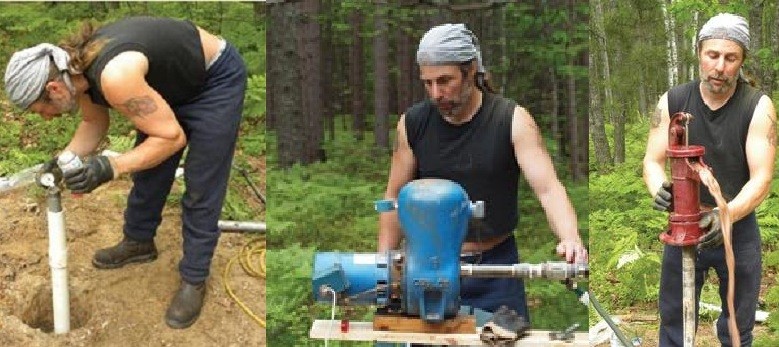Of course, the physics of water-witching or divining is not always successful and geologists will quickly adhere to the virtues of scientific-based methods, telling you and your family where to dig! This is a vital skill you should learn when living off the grid. Not to mention it's invaluable for when SHTF. Here's how to go about driving the well:
Driving the well:
Begin by digging a pilot hole at least two feet deep using a hand auger or a shovel; the auger will make a pipe-size hole, but the wider shovel hole will require that soil be tamped around the well point to help hold it straight when pounding. A PVC casing placed over the well pipe — but kept above the point so that it doesn’t inhibit water flow — keeps loose dirt from falling in around the well pipe as it is driven downward.
Well hammers can be as simple as a sledgehammer, or more preferably a large wooden mallet for softer soils. When punching through harder earth, some well-drillers prefer a pile-driver weight (a pipe filled with concrete) suspended from a tripod where it is hoisted upward then dropped onto the capped well point. More physically demanding versions include “slam hammers” comprised of a heavy, flat-bottom iron weight with a long steel rod that extends from it and into the well pipe as a guide.
When the well point has been driven down until only about ten inches remain above ground, remove the protective pipe cap and screw a four-inch coupler (a collar with internal threads) over the exposed threads. Use pipe joint compound or Teflon plumber’s tape (wound in the direction of the threads, clockwise) to ensure a watertight seal. Screw a 6-foot-long pipe that is threaded on both ends into the coupler — actual length of the pipe can vary, but it has to be short enough to reach the upper end (you’ll probably want a stepladder). Cap the upper end of the pipe, and pound it down until only about ten inches remain above ground. Remove the cap, apply joint compound to the threads, and screw-on another coupler, then screw another length of pipe into the top of the coupler. Pound this pipe down, and repeat the process, making sure to seal every threaded connection with joint compound or Teflon tape.
The pipe should move visibly downward with each blow from your hammer. If it stops and refuses to sink further after several blows, you may have hit a large rock. Do not continue hammering to force the pipe further, or you might damage the well point.
When you reach the water table you will hear a hollow “bong” sound that issues from the pipe with every blow. To test it, remove the cap and drop a long string with a weight tied to its end (chalk line works well) down the well pipe until slack in the string tells you that the weight has reached the bottom of the well point. Draw the string back up, and measure how much of its length has been wetted to determine how deeply the well point has penetrated into the water table. To ensure good suction at the pump, it is important that the entire length of the perforated well point be immersed, and preferably at least two feet beyond that to account for seasonal variations in the water table.
There is more to this story, including what to do when you actually reach water! To read more go to Backwoods Home.
The idea of having your own fresh water well during a SHTF situation is one less stress off your mind. Keep your family safe and hydrated! As they say, where there is water there is life!
Featured Image via Backwoods Home

Cool
Those well points stop up a Lot I’ve had some good luck with hand drilling wells with a homemade drill I made from black thread pipe and a old mobile home auger(tie down) I can drill to bedrock
Chet Crowe
Ken LaBarge
Brian Kevin Bryant
Johnny Donner Chadwick RN
Tom Ames
Tony Perkins